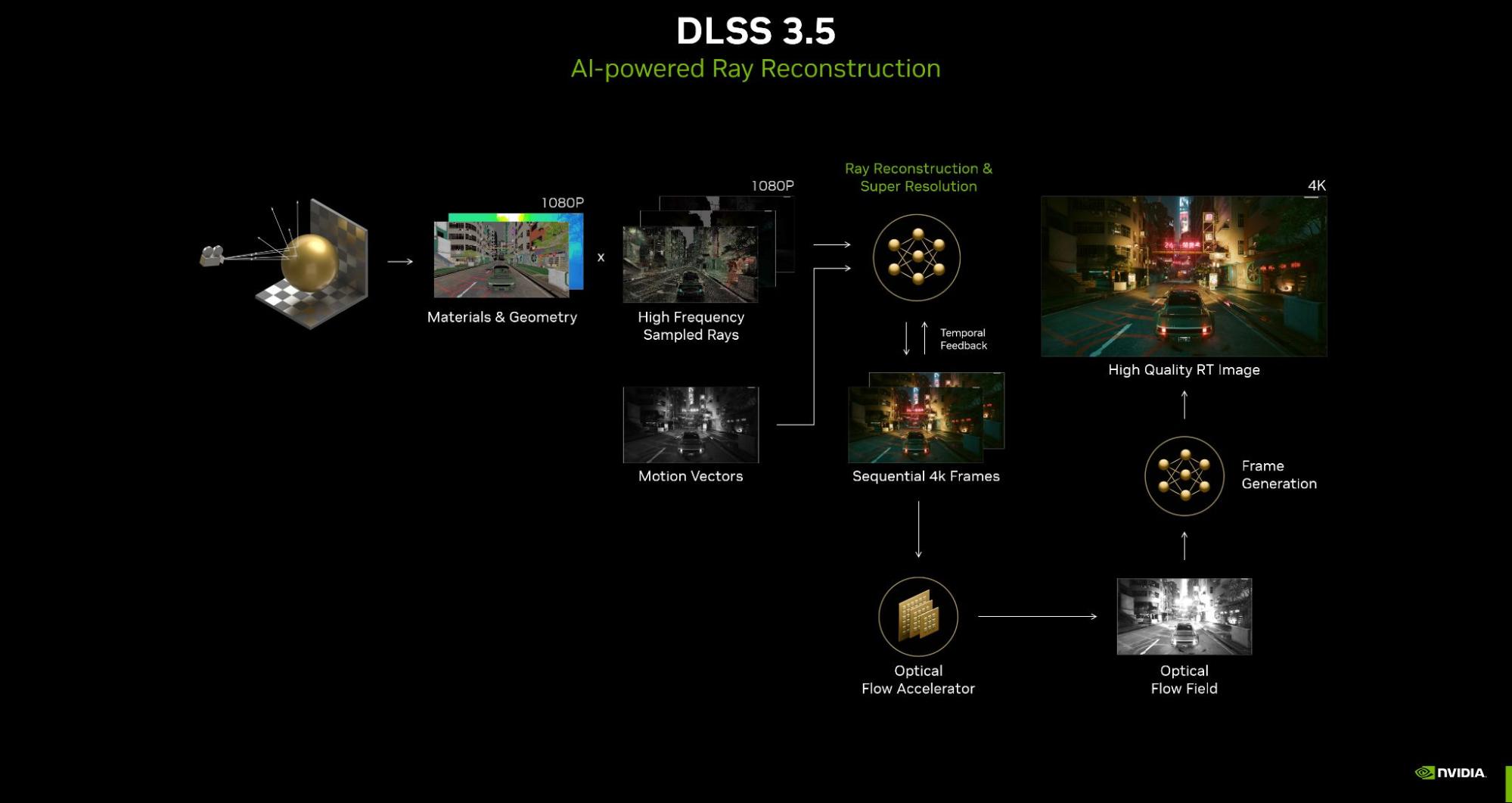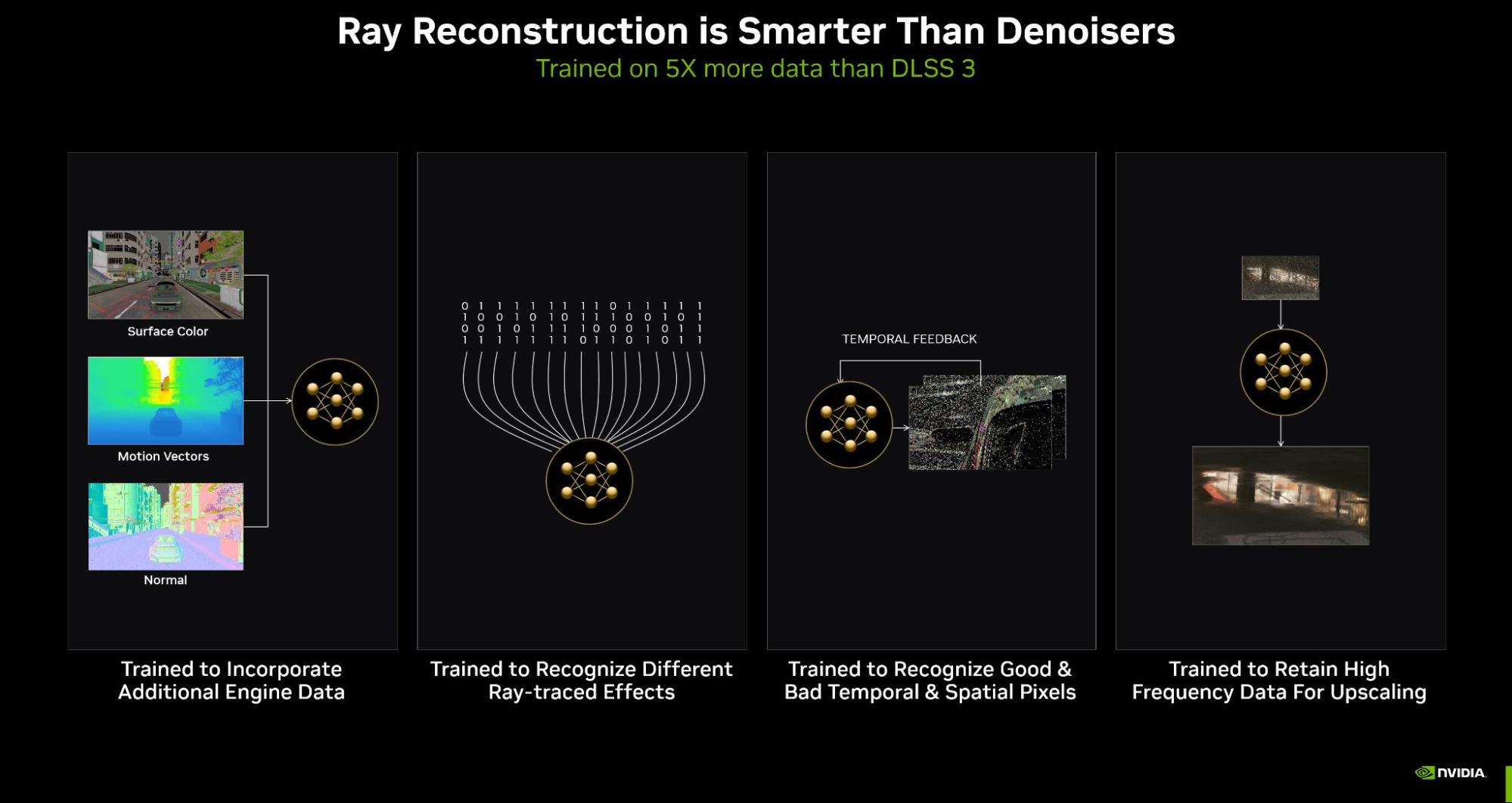
Since 2018, NVIDIA DLSS has leveraged AI to enable gamers and creators to increase performance and crank up their quality. Over time, this solution has evolved…
Since 2018, NVIDIA DLSS has leveraged AI to enable gamers and creators to increase performance and crank up their quality. Over time, this solution has evolved to include groundbreaking advancements in super resolution and frame generation.
Now, the AI neural rendering technology takes the next step forward with DLSS 3.5. This update includes an important new feature called Ray Reconstruction.
Video 1. Learn how DLSS 3.5 works with Bryan Catanzaro, NVIDIA VP of Applied Deep Learning Research
Ray Reconstruction is a new neural network for all GeForce RTX GPUs that further improves the image quality of ray-traced images. Trained on 5x more data than DLSS 3, DLSS 3.5 replaces hand-tuned denoisers with an NVIDIA supercomputer-trained AI network that generates higher quality pixels in between sampled rays.
 Figure 1. AI-powered Ray Reconstruction generates a high-quality ray-traced image in 4K from a 1080p source
Figure 1. AI-powered Ray Reconstruction generates a high-quality ray-traced image in 4K from a 1080p source
Cyberpunk 2077, Cyberpunk 2077: Phantom Liberty, Alan Wake 2, and Portal with RTX, all coming this fall, will include Ray Reconstruction.
Video 2. Ray Reconstruction improves the performance of ray tracing in Cyberpunk 2077 Overdrive Mode
DLSS 3.5 also adds Auto Scene Change Detection to Frame Generation. This feature aims to automatically prevent Frame Generation from producing difficult-to-create frames between a substantial scene change. It does this by analyzing the in-game camera orientation on every DLSS Frame Generation frame pair.
Auto Scene Change Detection eases integration of new DLSS 3 titles, is backwards compatible with all DLSS 3 integrations, and supports all rendering platforms. In SDK build variants, the scene change detector provides onscreen aids to indicate when a scene change is detected so the developer can pass in the reset flag.
 Figure 2.Ray Reconstruction is trained to recognize different ray-traced effects and the quality of temporal and spatial pixels
Figure 2.Ray Reconstruction is trained to recognize different ray-traced effects and the quality of temporal and spatial pixels
With these new features, you can achieve even better results with ray tracing, and more effectively manage fast scene changes.
Integration into a custom engine is developer-friendly with the Streamline 2.2 SDK, an open-source cross-IHV framework. Simply identify which resources are required for the decided Streamline plug-in. In the game’s rendering pipeline, you can then trigger when to execute the plug-in.
For Unreal Engine titles, simply install the plug-in into your project and most of the work is done. For a step-by-step guide to integration, see How to Successfully Integrate NVIDIA DLSS 3.
Ray Reconstruction will soon be available to all game developers—sign up to be notified. Auto Scene Change Detection is available now in DLSS 3.5 through the Streamline 2.2 SDK and Unreal Engine plug-in.
Source:: NVIDIA
